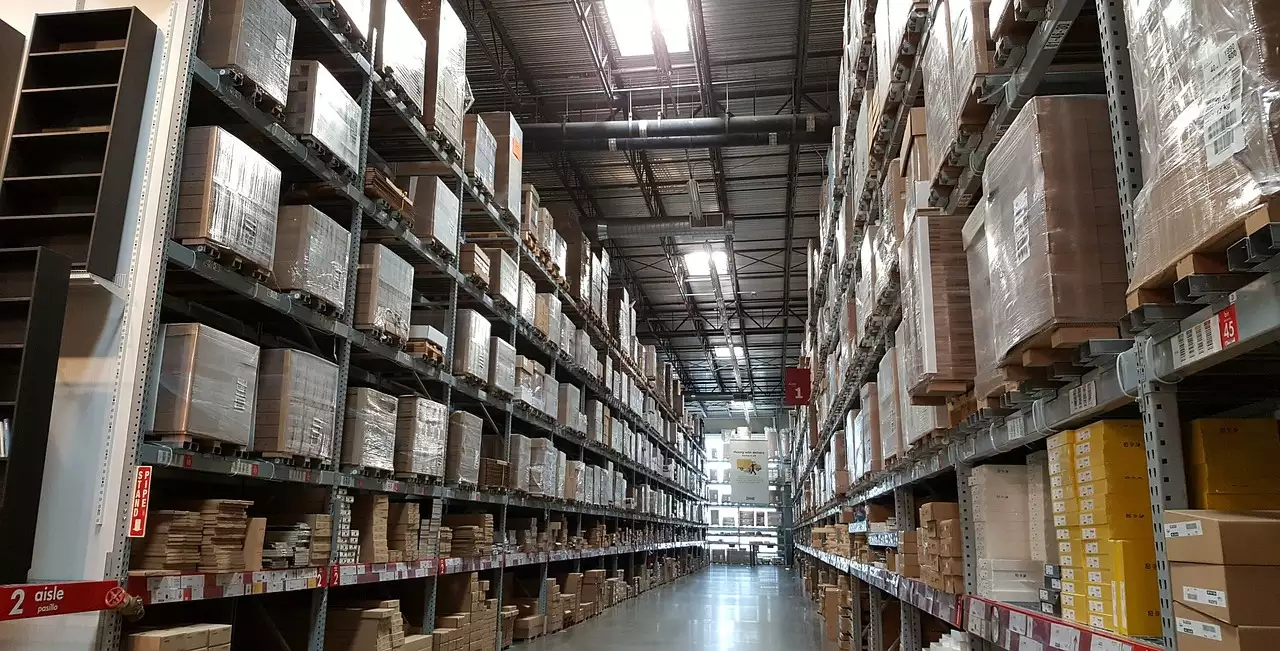FIFO Inventory Calculator
Is inventory management with the FIFO calculator right for your company?
Table of Contents
- What Is FIFO?
- How to Calculate Ending Inventory Value Using FIFO?
- How to Calculate the Cost of Goods Sold Using FIFO Method?
- FIFO Alternatives
- Advantages of the FIFO method
- Disadvantages of the FIFO Method
- How do different Industries use the FIFO method?
- Retail
- Manufacturing
- Agriculture
- Pharmaceuticals
- Electronics
- Automobile
- Food and Beverage
- Related tools:

First In First Out is the most logical movement of goods from any storage area to the point of use. Especially, for perishables and sensitive items. That’s why many companies calculate the current value of inventory using the FIFO method.
Doing the math might be difficult at first, like every other financial matter. However, we’ll walk you through the steps, and before you know it, the formulas will look quite easy.
Additionally, CalcoPolis is here with all of its finance tools. You can use the FIFO inventory calculator, plus all the other saving, investing, business, math, and macroeconomics calculators.
What Is FIFO?
First In First Out, or FIFO, is a sensible method for using stored items.
Using the products that were placed in the inventory first means keeping the items in a restaurant fresh, the electronic gadgets safe from humidity, and the latest fashion trends hot.
It also reflects nicely on a balance sheet, where the valuation of the inventory is maximized, the profits are high, and the cash conversion cycle (CCC) is quick.
How to Calculate Ending Inventory Value Using FIFO?
In simple terms, you just multiply the cost of an item by its quantity to get the inventory value. If you have various costs for different batches on site, then you should multiply each quantity by its cost price, then add up for all the batches.
This reads easier as a formula:
Beginning Inventory = P1Q1 + P2Q2 + … PiQi
Let’s take this a step further, and reach a more generalized formula:
Current Inventory = Beginning Inventory + New Items - COGS
Which takes us to another important term: the Cost of Goods Sold, or COGS. Here’s how you can calculate its value if you implement the FIFO method.
How to Calculate the Cost of Goods Sold Using FIFO Method?
Generally, the oldest items in the inventory come at the lowest prices. For example, if you have a T-shirt printing business, and you do the following purchases:
100 T-shirts at $10
50 T-shirts at $20
200 T-shirts at $40
If you need to sell 250 T-shirts, then your COGS would be as follows:
COGS = 100 x 10 + 50 x 20 + 100 x 40 = $6000
This is done according to the formula:
COGS = P1Q1 + P2Q2 + … PnQn
Where ‘n’ is the number of inventory batches used to fulfill the sale.
FIFO Alternatives

While FIFO is a wonderful method for assessing the value of your inventory, it’s not the only one you can use.
There are two other recognized alternatives, which are:
- LIFO
- Dollar-cost averaging
LIFO is the exact opposite of FIFO. Meaning, you move the latest items that arrived into your inventory first. Last In First Out, or LIFO is particularly useful if you want to decrease the amount of taxed income.
It has a couple of downsides though, which are a reduced valuation for the inventory, and decreased profits.
This would be clear from the values of COGS as well as ending inventory. It’s worth noting that LIFO doesn’t really reflect the actual movement of goods, which is often selling the oldest first.
Additionally, LIFO isn’t accepted by the IFRS. This puts some limitations on the use of LIFO worldwide. So far, it’s allowed by the Generally Accepted Accounting Principles (GAAP) inside the US, and also for US companies operating overseas.
Dollar-Cost averaging is the simplest method of calculating inventory value. This method uses the average cost for all the products in storage. Here, all the costs are added, and then, divided by the number of items, which gives a nice estimate of inventory value.
The intelligent financial tools from CalcoPolis would let you calculate all these inventory valuation alternatives in a jiffy. And then, you can pick the right one for your business.
Advantages of the FIFO method
The main reason for adopting FIFO is that this method accurately models the actual movement and value of goods.
This is particularly important if the inventory consists of sensitive components or electronics that could be damaged if left too long in storage. Perishables, like food substances, are also handled using the FIFO method.
To a lesser extent, the fashion industry benefits from implementing FIFO in its inventories. Items left too long in storage might go out of fashion, or fail to catch up with the hottest trends.
Another great feature that comes with using FIFO is the high valuation of the inventory, especially during inflationary times. When the opposite happens, in a deflation, FIFO keeps the profits in check, and hence, the total income isn’t brutally taxed.
Moreover, it’s an internationally recognized bookkeeping method, which makes doing business with other companies overseas pretty seamless.
Disadvantages of the FIFO Method
While FIFO queue has its merits, it is essential to address its potential disadvantages, especially when comparing it with other inventory valuation methods such as LIFO (Last In First Out) and the average cost method. Here are some limitations of using the FIFO method in your inventory system:
-
Impact on Profits During Inflation: In times of inflation, when costs increase, the oldest inventory (which is the cheapest) is sold first according to FIFO. As a result, the cost of goods sold is lower, leading to higher reported profits. While this might seem like an advantage, it can lead to higher taxable income, which isn’t necessarily beneficial for the company.
-
Mismatch with Current Market Prices: Since the ending inventory value is based on the prices of the more recently acquired items, FIFO can result in inventory values that are closer to current market prices. However, this means that the cost of goods sold doesn't reflect current market prices, which can lead to a mismatch in financial analysis.
-
Manipulation of Profits: Companies that understand how to calculate FIFO can, in some scenarios, manipulate when they buy inventory to influence reported profits, especially if they can predict future price changes.
-
Complexity in Fluctuating Markets: In markets where prices of goods frequently fluctuate, continuously tracking which units were sold first can complicate the inventory management process. This can lead to challenges when trying to calculate the ending inventory accurately.
-
Not Always Reflective of Physical Flow: While FIFO suggests that the oldest items are sold first, this might not always be the case in reality. For instance, in some industries, the physical flow of goods might not align with the FIFO method, making it a less realistic representation.
-
Comparison with LIFO: Companies using the FIFO method might appear more profitable when comparing FIFO and LIFO, especially during inflationary periods. However, this can give an unrealistic comparative advantage over companies using LIFO, which might be portraying a more accurate representation of current market conditions.
-
Not as efficient as the Average Cost Method: The FIFO method can sometimes lead to inefficiencies when compared to the average cost method. While FIFO focuses on selling the oldest stock first, the average cost method averages out the costs, which can provide a more balanced view of inventory value and cost of goods sold.
While the FIFO method offers several advantages in inventory management, understanding its drawbacks is crucial. Companies should weigh the pros and cons, taking into consideration their specific industry, market conditions, and business needs, before implementing a particular inventory system.
How do different Industries use the FIFO method?

FIFO finds its application across various industries, given its straightforward approach to tracking the units sold and managing inventory costs. Here’s how different sectors utilize FIFO and how its principles align with industry-specific needs:
Retail
In the retail industry, the goal is often to sell older stock first, especially for seasonal items. By tracking the total units bought at specific prices and determining the units sold, FIFO provides an accurate method to calculate the inventory's cost. Using a FIFO calculator, retailers can effortlessly determine the remaining inventory value based on the most recent purchases.
Manufacturing
Production lines typically use components in the order they are received, especially for dated or perishable parts. FIFO valuation ensures that inventory accounting reflects the actual consumption of materials in the manufacturing process. It aids in determining the cost of goods produced and sold, making the periodic inventory system management more straightforward.
Agriculture
Given the perishable nature of agricultural products, using FIFO for ending inventory is essential. By selling or using the oldest harvested crops or produce first, waste is minimized. The number of units in the inventory decreases in the order they were added, ensuring fresh stock and efficient inventory costs management.
Pharmaceuticals
Medicines and other health products often have expiration dates. FIFO ensures that older batches are sold or used before newer ones. This practice not only maintains the efficacy of the drugs but also ensures compliance with safety standards.
Electronics
In the fast-evolving world of electronics, newer models or versions are frequently introduced. By applying the FIFO method, companies can reduce the chances of having outdated products in their inventory. Accurate inventory accounting, in this case, is not just about cost but also about keeping the product range current.
Automobile
Car parts, especially those with limited shelf lives like rubber or certain composites, are better managed using FIFO. It ensures that older components are used in production first, guaranteeing the quality of the final product. The FIFO calculator used in this industry can help streamline production costs and manage inventory effectively.
Food and Beverage
FIFO is crucial here, given the perishable nature of many food items. The sequence of the number of units being sold or used ensures freshness and reduces wastage. Also, in terms of beverages, especially wines or spirits that can age, FIFO ensures that older stocks, which might have a different value, are adequately accounted for.
In summary, the FIFO method offers clarity and efficiency in inventory management across industries. By understanding the total units and units sold, companies can gain an accurate picture of their inventory and cost of goods, allowing for informed decision-making.
The versatility of the FIFO calculator further simplifies the process, ensuring that businesses, regardless of their sector, can accurately determine costs and manage their resources effectively.
Related tools:
Economic Order Quantity Calculator - this tool will help you find out the best viable number of items you need to order to maintain sales most cost-effectively.

